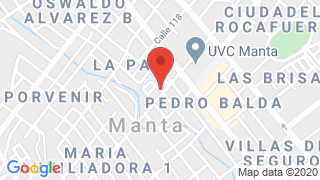Manta Ecuador



Manta Ecuador
Manta, officially named as San Pablo de Manta, located in the province of Manabí.
It celebrates its cantonization every November 4; it borders to the north and west with the Pacific Ocean, to the south with the Montecristi canton and to the east with the Montecristi and Jaramijó cantons. It is the first tourist, maritime and fishing port of Ecuador of great importance for Ecuadorian foreign trade. Here the breeze radiates the morning, the snails sing their best song to the rhythm of the movements of the Balboa Sea. Manta is touristy charming, for its magnificent beaches, located in the heart of the city.
It has a dry subtropical climate, with temperatures ranging between 26º C. in winter and 24º C. in summer. Manta is a magical city with splendor and a belief in the future. Its population is especially dedicated to industry, fishing, commerce and tourism that lies in the beauty of nature, sun and adventure.
Manta Tourist Places
Manta is visited annually by both foreign and national tourists. Its most frequented beaches are:
- Los Esteros
- Tarqui
- El Murciélago (the bat)
- Barbasquillo
- San Lorenzo
- Santa Marianita
- Liguiqui
- La Tiñosa
- Piedra larga (Long stone)
The beaches El Murciélago and Tarqui stand out. They favors the practice of sport fishing in boats. Manta also has an exhibition museum of archaeological pieces.
Manta is known in Ecuador for the nightlife of its Malecón of the Murciélago and Tarqui beaches, mostly the "pink zone" as the Flavio Reyes street is known and also in the place of recent and growing movement: Plaza del Sol and Piedra Larga; In all these places we find varied restaurants and various fun places like karaokes, and discos.
It highlights the friendliness and hospitality of its people, which makes this Canton of the province of Manabí preferred by both locals and foreigners. Manta is known as the world's first tuna port. And as one of the main cruise ports of the American Pacific coast.
The city is considered the most important, popular and visited resort in Ecuador, for its beautiful and cozy beaches, first-class hotels, clubs, bars, discos and sports centers for tourists.
Manta Beaches
- El Murciélago beach
- Located in northern Manta, tourist place you can find gastronomy, handicrafts and more like for example its parties that as usual are always celebrated big and is where there is more tourist influx.
- Los Esteros beach
- It is a quiet beach ideal for people who want to rest and relax, also from this place you can observe the boats of the port.
- San Lorenzo Beach
- In this place there are not many tourists that is why it is perfect for those who are looking for a bit of tranquility in contact with the sea.
- San Mateo Rural Beach
- Here you can find the port of the city.
- Urban Beach of Barbasquillo
- Come and enjoy an amazing view surrounded by beautiful hotels, this is why it is the best place for those looking for accommodation.
- Tarqui Urban Beach
- Here you can enjoy the typical Manabi’s food like its delicious fresh fish straight from the sea to the pot.
Climate of Manta Ecuador
- From dry subtropical to wet subtropical.
- Average temperatures between 25º C (76º F) and 30º C (90º F)
- Like most of the Coast of Ecuador, the rainy season (winter) lasts from December to May.
- Consequently the dry season goes from April to November, and when the humidity levels fall, it becomes cooler
Manta History
During the pre-Columbian history of Ecuador, Manta was home for at least seven different civilizations. According to some research, Mayas arrived in Manta around 500 A.D., but found it already inhabited by other groups, so they withdrew. Very little is known about the peoples that lived here between the Mayas arrival and the Inca Conquest, but there is consensus that the current city of Manta, formerly known as Jocay, was used by the Incas and the ancient inhabitants indigenous as a Trade center. The Spanish explorer Bartolomé Ruiz was one of the first Europeans who arrived in Jocay in 1526. Later, in 1534, Pedro de Alvarado arrived with his fleet in Bahia, from where he left with his men on a conquest expedition. They found the indigenous population of Jocay by surprise and took their chief Ligua Tohallí prisoner. They also found large amounts of gold, silver, emeralds and precious stones. During the Spanish colony, the parish of Manta was part of the territory of Guayaquil.

Publicado en:
Publicado por:



